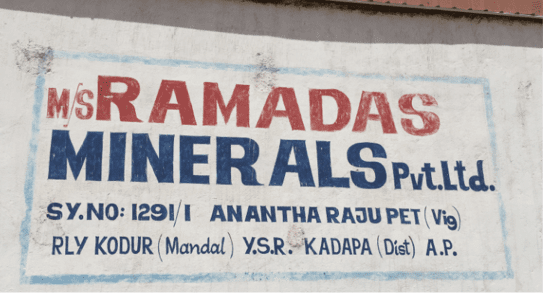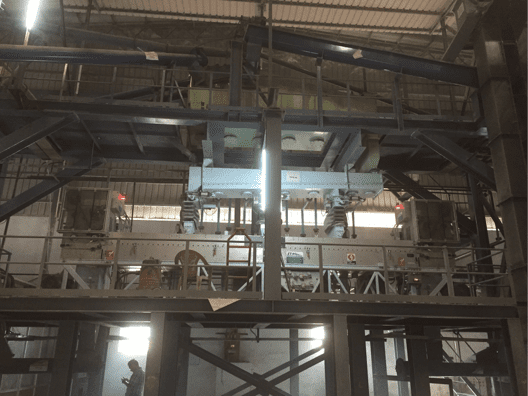மொழி தேர்வு:
முதன்மையான barite உள்ளது, இயற்கையாக உருவாகும், பேரியம் அடிப்படையில் தாது. பேரியம், அணு எண் 56, அதன் பெயர் கிரேக்க பெறுகிறது மற்றும் கனமான பொருள். Barite baryte எனப்படும். அதில் தற்போது வணிக வைப்புக்கள் barite காணப்படுகின்றன ஆரம்ப நாடுகள் உள்ளன அமெரிக்கா, சீனா, இந்தியா, மொரோக்கோ. Barite-உயர்ந்த அடர்த்தி மற்றும் வேதிவினையற்றது பல பயன்பாடுகளுக்கு சிறந்த கனிம செய்ய.
கரைப்பது4 barite இரசாயன சூத்திரம் ஆகும். அது ஒரு உயர்ந்த அடர்த்தி கொண்டுள்ளது 4.50 கி/செமீ3. மோவின் கடினத்தன்மை உள்ளது 3.0 வேண்டும் 3.5. Barite, இது பலதரப்பட்ட உட்பட மஞ்சள் நிறங்களை காணலாம், பழுப்பு, வெள்ளை, நீலம், கிரே, அல்லது கூட நிறமற்றது, பொதுவாக ஒரு விட்ரியஸ் முத்துக்களாலான காந்தி உள்ளது.
Barite இணைந்து அலோக மற்றும் உலோக கனிமங்களை காணலாம். பிரித்தெடுத்தல் இயங்குவதற்கும் இருக்க வேண்டும், barite பொதுவாக ஒரு முக்கியமான பொருள் இருக்க வேண்டும். இதில் பொதுவாக காணப்படும் வைப்பு வகைகள் நாள, எஞ்சிய, மற்றும் படுக்கை. சிரை மற்றும் எஞ்சிய நீர்வெப்ப தோன்றியவை, படுக்கை வைப்பு படிவுப் இருக்கும்போது.
பெரிய வைப்பு அமெரிக்காவில் ஜோர்ஜியாவில் கண்டுபிடிக்கப்பட்டுள்ளன, மிசூரி, நெவாடா மற்றும் டென்னசி. கனடாவில், யுகான் பிரதேசத்தில் கனிம வெட்டியெடுப்பதற்கு, நியூஃபவுன்லாந்து மற்றும் நோவா ஸ்கோசியா. மெக்சிகோவில், barite வைப்பு ஹெர்மோசிலோவிலுள்ள கண்டுபிடித்தார், அஸ்டெக்கியர்களின், மான்டரே மற்றும் Durango.


The overwhelming majority of the barite that is mined is used by the petroleum industry as a weighting material in the formulation of drilling mud. Barite increases the hydrostatic pressure of the drilling mud allowing it to compensate for high-pressure zones experienced during drilling. The softness of the mineral also prevents it from damaging drilling tools during drilling and enables it to serve as a lubricant. The American Petroleum Institute (Api) has established specifications for the use of barite in drilling mud.

Dry Barite Beneficiation
STET has both pilot scale and commercial experience processing barite to remove gangue such as silicates, இரும்பு, and alumina. Low-grade barite beneficiation with a specific gravity between 3.5 – 4.0 has been successfully upgraded using the STET process to product API-grade barite.
STET can demonstrate that the dry electrostatic separation process offers many advantages over traditional wet processing methods (மிதப்பு) உட்பட:
Disrupting a new industry is always a challenge. எஸ்டி உபகரணம் & Technology and Ramadas Minerals Pvt. லிமிட்டெட். in India understand this challenge well. Ramadas Minerals contacted STET to perform testing of a low grade barite / quartz sample produced at the APMDC barite mine in Andhra Pradesh, இந்தியா. The material was a low grade tailings product from the mining process. It contained too much silica to be sellable as a high SG barite product, and was being produced in large volumes. What was needed was a process to transform the mining waste to usable product. Wet processing (மிதப்பு) was one alternative technology being considered.
Testing at the STET pilot facility demonstrated excellent separation results for the barite powder. The STET separator was able to achieve the goal of +4.20 SG barite through a single separation step.
The STET separator was fit into the existing building, which was originally designed to house a flotation facility. The STET separator installation resulted in significant savings of space, in relation to the previously designed flotation facility. கூடுதலாக, a substantial reduction in capital and operating cost was realized.
Contact STET to learn more about dry processing of barite.